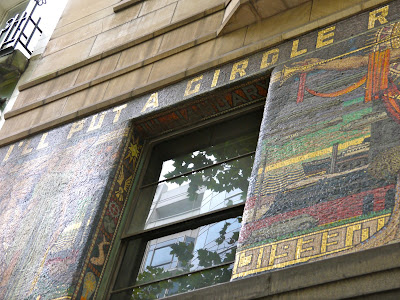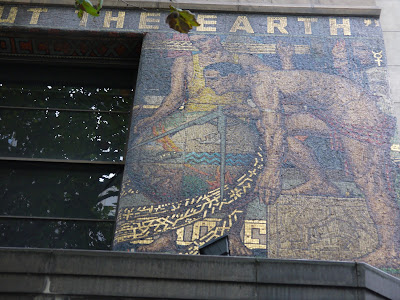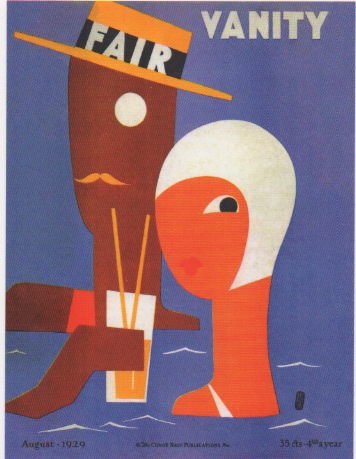Melbourne has one of the largest and best preserved collections of art deco and modernist buildings in the world. This, together with its excellent cafes and restaurants, many theatres, galleries and museums makes it one of my favourite cities. I have visited Melbourne three times and plan to be there again next year when visiting relatives in Australia.
Although the best examples of art deco and modernism can be found in the
city's many suburbs, there are some superb examples in the Central Business District (CBD). Newspaper House at 247-249 Collins Street was built in 1884, designed by architects Stephenson and Meldrum for the former Herald and Weekly Times newspaper. A little early for art deco you might think, but the building's facade was gloriously reshaped in 1932 when it was covered with a mosaic mural designed by
Napier Waller. Designed to celebrate humanity's technological advances it shows various methods of transport and international communication with ships, planes and cars - remember this was along time before the age of Facebook and twitter! The work was commissioned by the Murdoch family and designed at the suggestion of
Theodore Fink, a politician, patron of the arts and one of the newspaper's directors. The mural is at first floor level and bears the text
I'll put a girdle round about the earth - a quote from
Puck in Shakespeare's A Midsummer Night's Dream.



It is affixed to slate panels connected to the brickwork with copper dowels and is designed in three sections divided by two windows. The mural is well preserved and its vibrant colours appear textured and to have depth. The detail carries on from the facade into the recesses that accommodate the windows. It is best viewed and photographed from the opposite side of the street. As in most big cities, people are too busy to look up and enjoy this beautiful piece of street art or don't know it's there or have forgotten about it. Each time I have photographed it, the mural has attracted a little crowd - first as people stop to see what the tourist is so interested in and then to admire Waller's work for themselves, either re-connecting with it or seeing it for the first time.
Waller, who studied and lived in Melbourne designed two other murals in the city, one in Temple Court, Collins Street and another at Monash House, William Street. He was also responsible for the mosaics and stained glass windows in the
Australian War Memorial in Canberra. His achievements are particularly outstanding given that he lost his right arm when serving in France during the First World War. Determined to continue with his art he taught himself to draw with his left arm and continued working.
Newspaper House was sold to a Singaporean construction company in May 2015 for the staggering sum of $23 million (Australian dollars) - just over £11 million. I will be photographing it again in May 2016!
You can see more pictures of Melbourne's wonderful art deco buildings
here.











